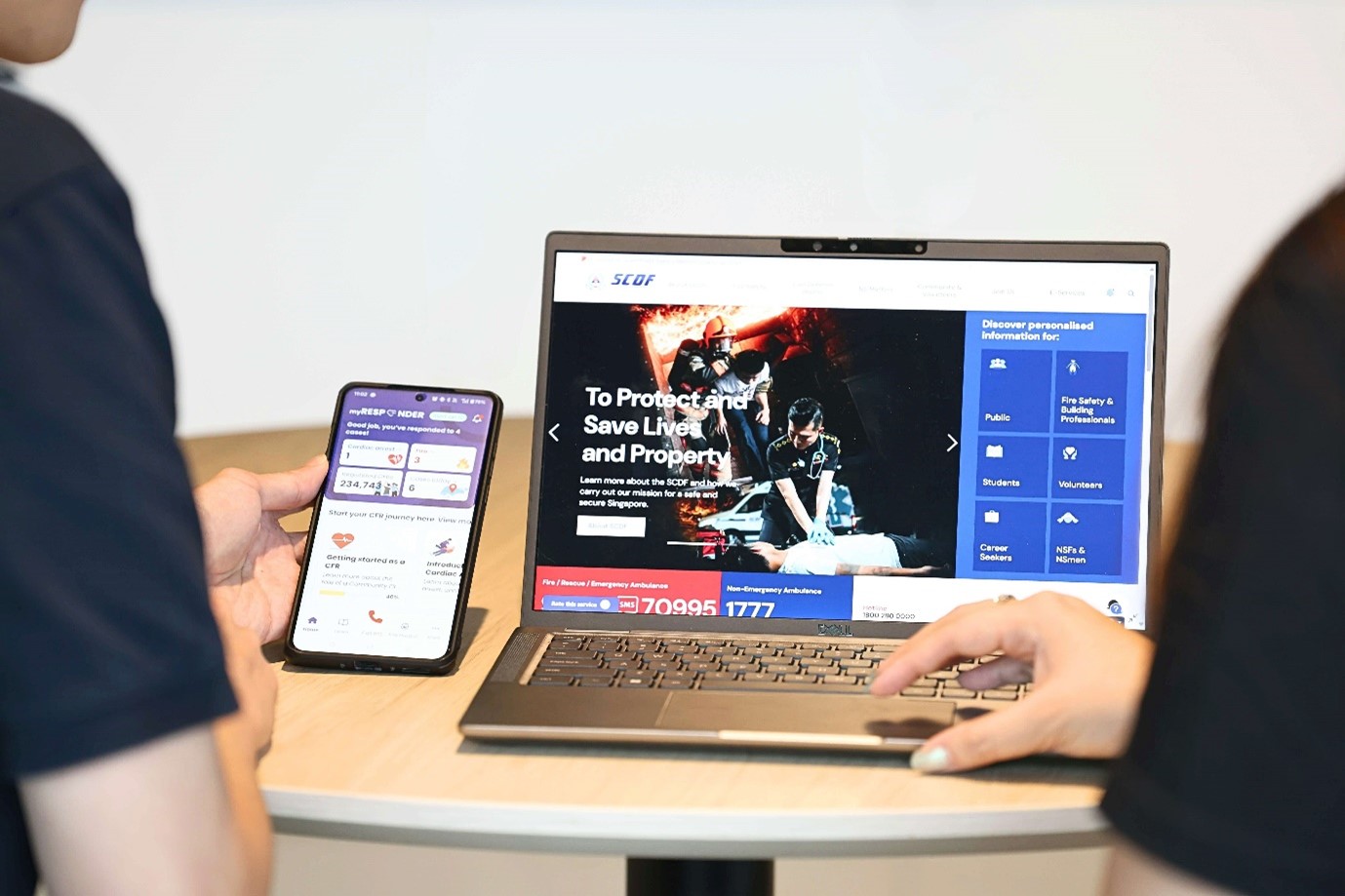 (Photo: HTX/Janna Giam)
(Photo: HTX/Janna Giam)
The revamped website for the Singapore Civil Defence Force and the latest version of the myResponder mobile app, both of which were made possible by HTX’s Digital Services Programme Management Centre (DSPMC), were conferred the Singapore Good Design Mark (SG Mark) under the Digital Design category on 18 September 2025.
Launched by the Design Business Chamber Singapore (DBCS) and Japan Institute of Design Promotion (JDP) in 2013, the SG Mark represents “the benchmark for exceptional design quality that impacts businesses and communities in Singapore and beyond”.
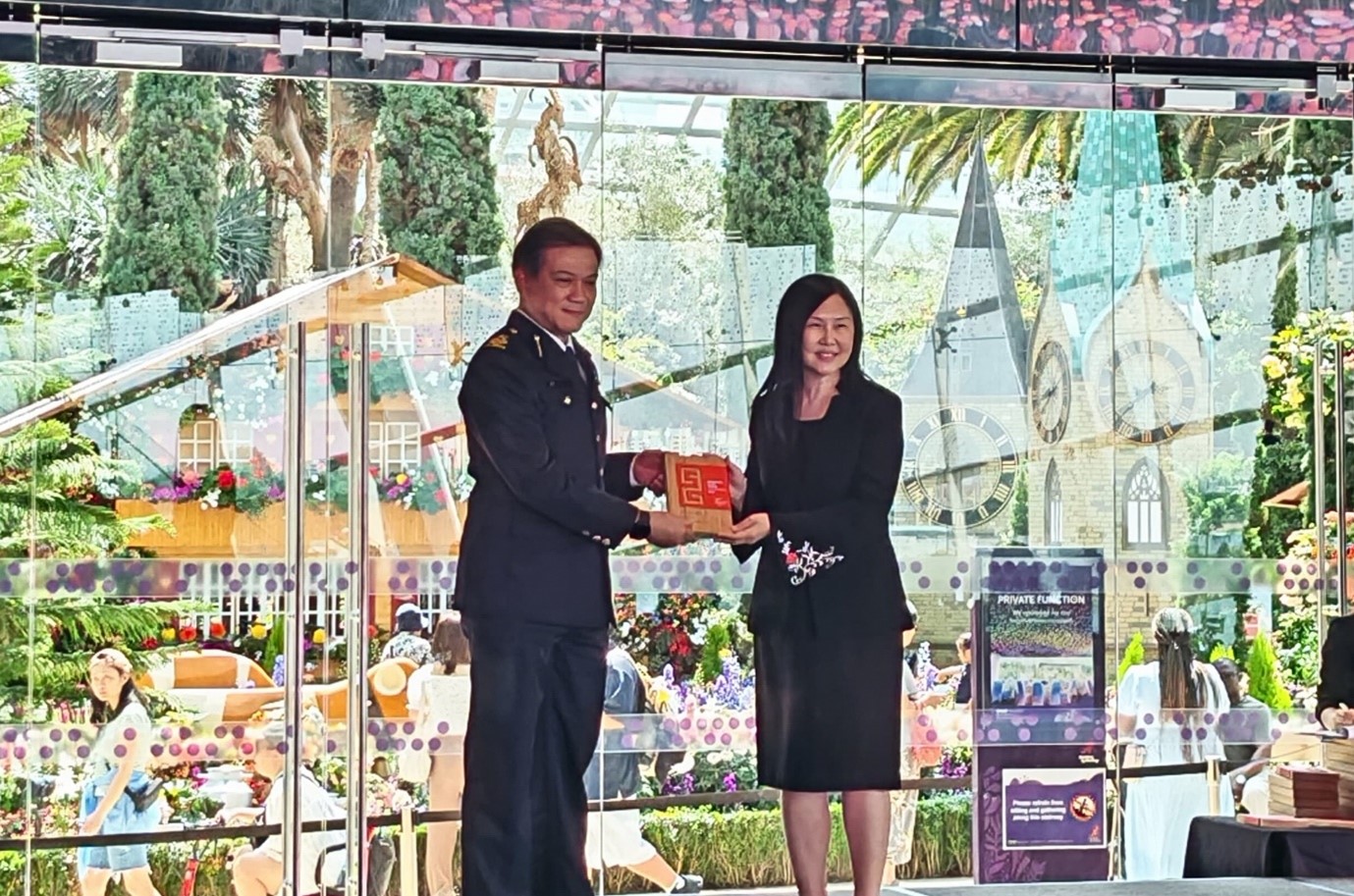 SCDF Director (Transformation & Future Technology Department) AC Leow Chew Hong receives the SG Mark for the SCDF website and myResponder app on 18 September 2025. (Photo: SCDF)
SCDF Director (Transformation & Future Technology Department) AC Leow Chew Hong receives the SG Mark for the SCDF website and myResponder app on 18 September 2025. (Photo: SCDF)
“The award is a testament to our team's user-centric product approach, and commitment to build solutions that truly address the end users’ needs. We want to create meaningful impact to the community,” said DSPMC IT Consultant, Low Guoliang, who worked on the projects.
The SCDF website had also clinched the Best Accessibility and Best Search Engine Optimisation (SEO) Awards at the 2024 Digital Services Awards.
Upping the ante
When revamping the SCDF website, HTX and SCDF came together with one goal in mind – to create an intuitive and stress-free user-first experience for all visitors, so that they can quickly find information or resources on Singapore’s emergency services and preparedness.
The challenge? The website sees a large range of users with varying needs.
Apart from fire safety professionals, the user base also includes career seekers, aspiring volunteers and members of the public.
To manage this, HTX’s DSPMC devised a solution that would transform the user experience into a personalised journey. This includes customised homepage information tailored to the user’s profile and persona-based guided navigation for e-services, which allow visitors to reach their desired content and services in much fewer clicks.
Menu descriptions were also shortened and terminology revised to facilitate clearer and more intuitive navigation throughout the site.
Essentially, every decision in the change process was aimed at knocking down barriers, enhancing clarity and making the website more inclusive, sustainable and future-ready.
 (Infographic: HTX/Janna Giam)
(Infographic: HTX/Janna Giam)

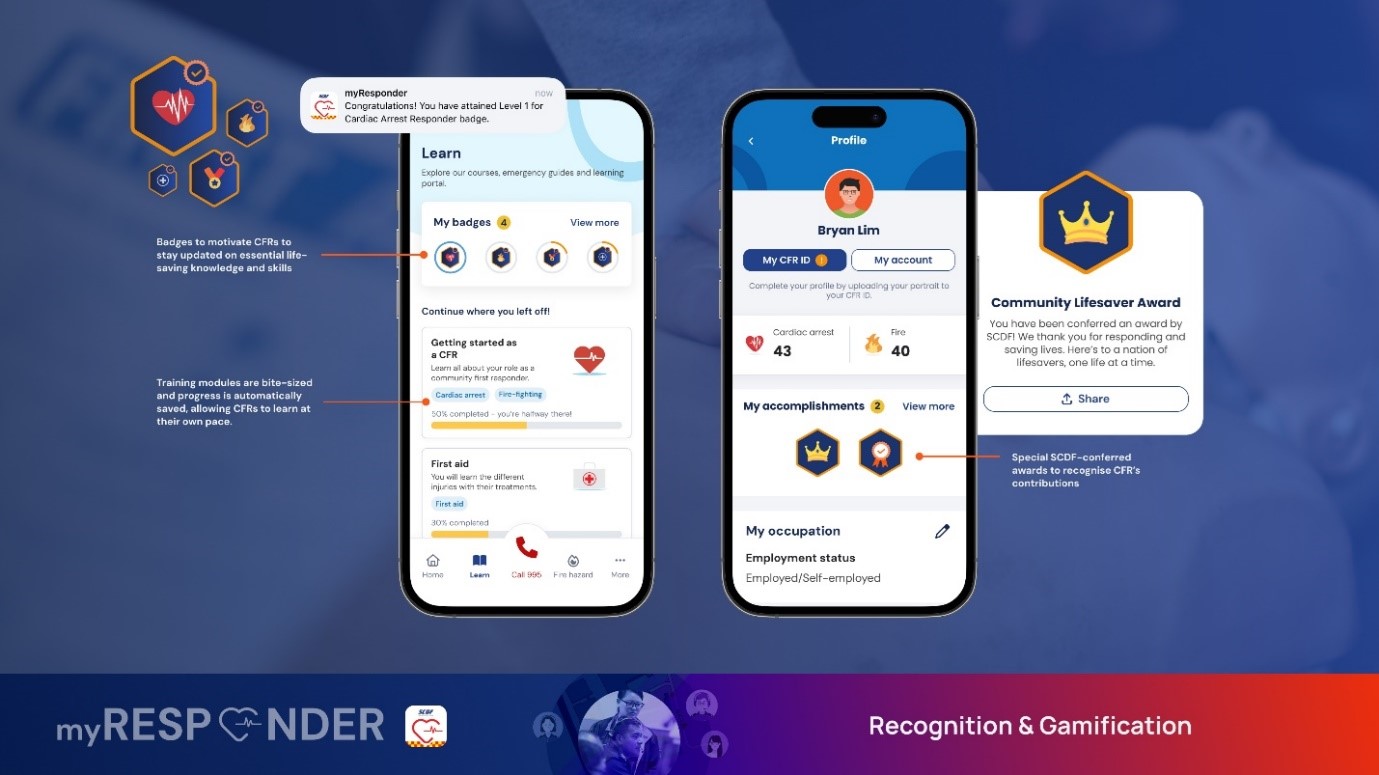
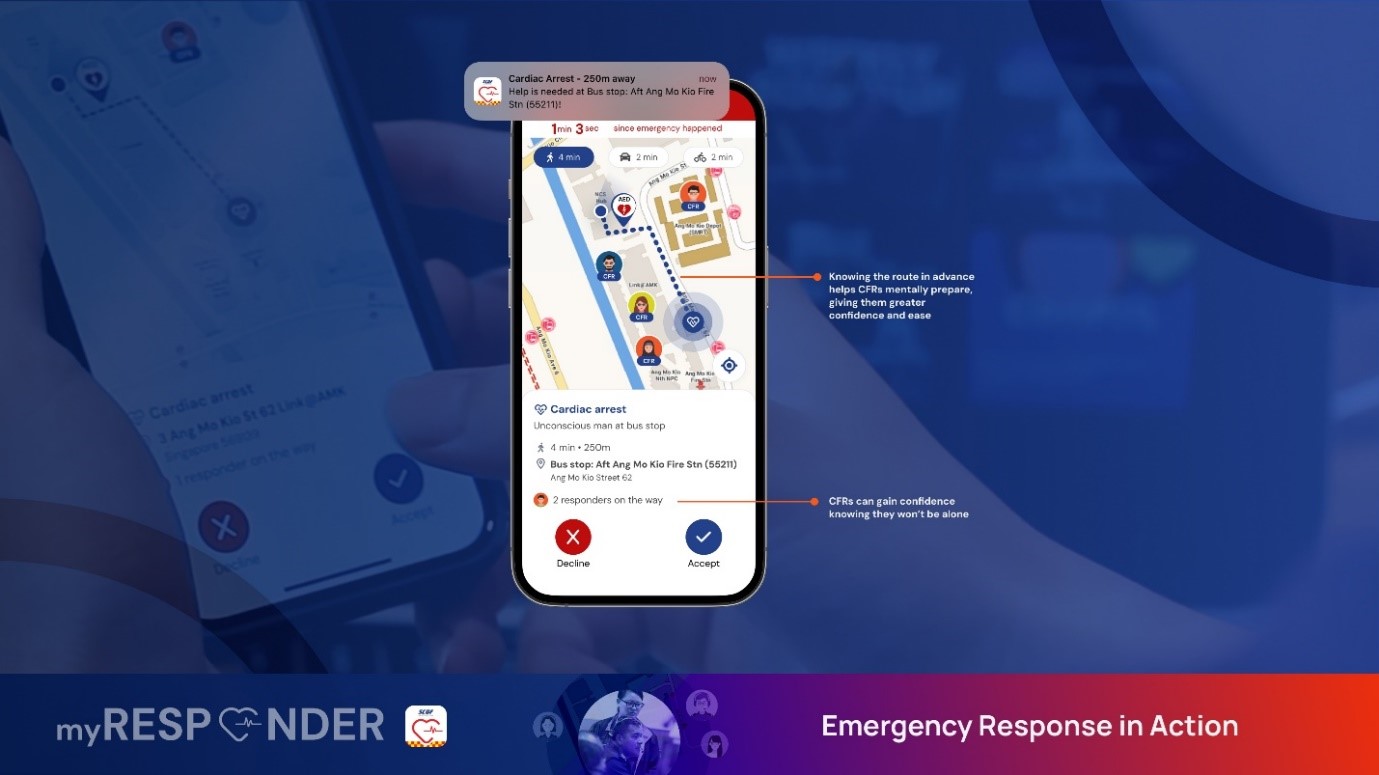
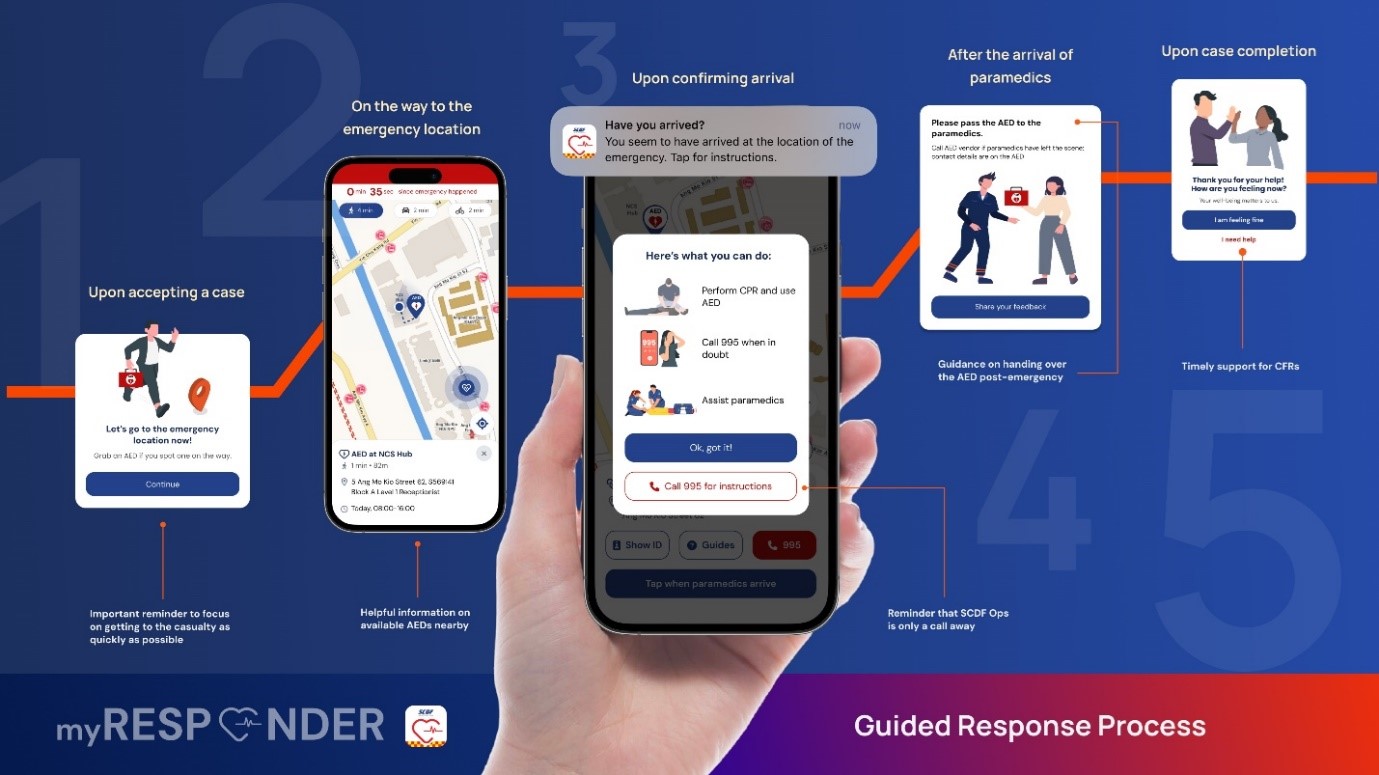
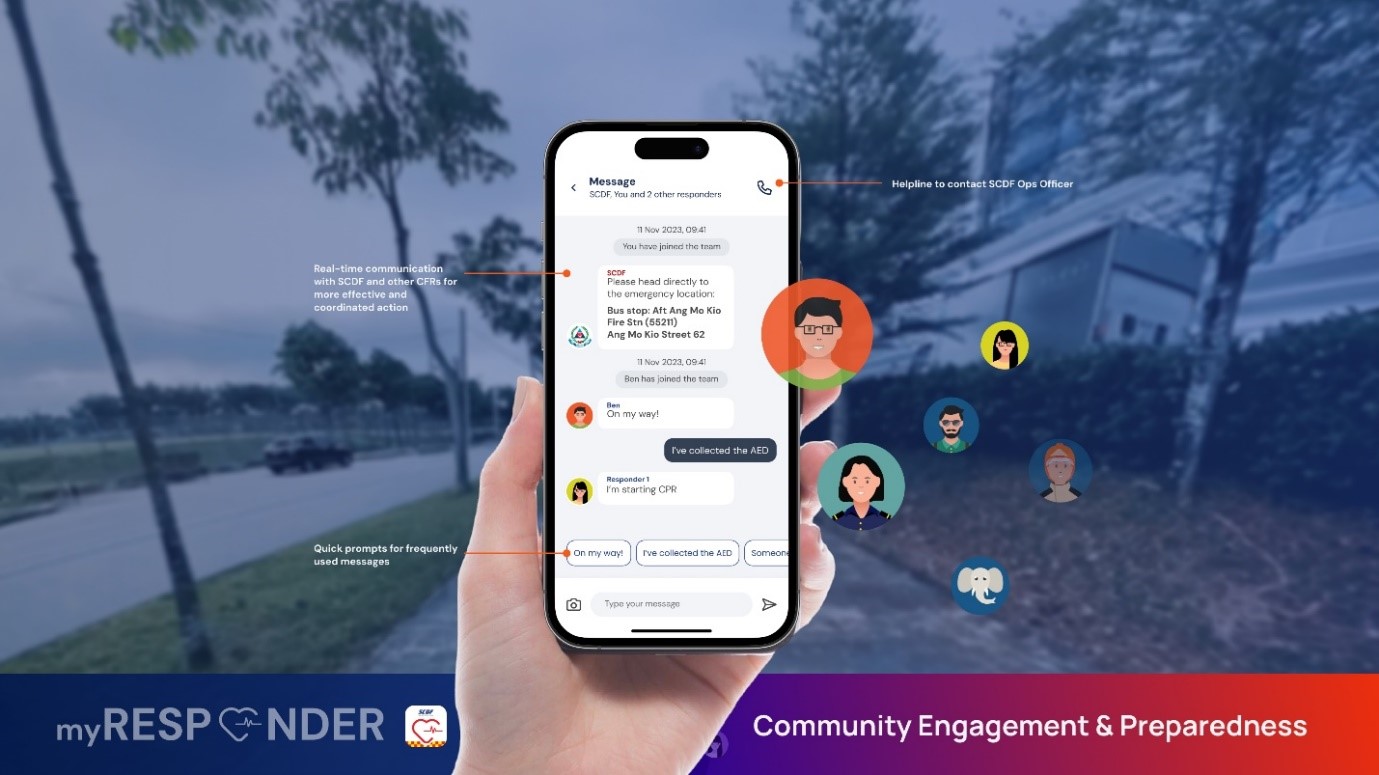 (Infographics: SCDF/NCS Digital Experience Team/Scott Frank Sithu)
(Infographics: SCDF/NCS Digital Experience Team/Scott Frank Sithu)
“We worked closely with SCDF and tech provider NCS not just to make the app more intuitive and engaging, but also to increase user adoption and retention rate,” shared Head, DSPMC, Alan Sim.
Alan explained how the team organised co-creation workshops involving SCDF users, alongside selected public volunteers, to bring together diverse viewpoints and collaboratively enhance the product.
Additionally, the team worked with the Smart Nation Ambassador Citizen Co-Creation Group (SNA CCG) to carry out usability testing with public volunteers, which helped to validate design decisions.
“The end goal was to drive higher response rates from Community First Responders (CFRs) during the critical first minutes of emergencies – which could mark the difference between life and death,” he said. CFRs are members of the public who volunteer to respond to emergencies in their vicinity before the arrival of the SCDF.
The myResponder app team’s efforts have since paid off. The enhanced app has not only boosted higher adoption and engagement levels, as well as case response activity, but has also set a new standard for community-driven emergency response and innovative app design.
 (Infographic: HTX/Janna Giam)
(Infographic: HTX/Janna Giam)
Meaningful collaboration
Thoughtful design can go a long way. With both projects, DSPMC made sure that any changes introduced were user-first and data-backed. This meant having to engage with various user profiles to gather feedback and identify gaps in the user journey.
Together with other HTX teams from xCyber and xCloud, the DSPMC also ensured that the services adhered to both global and national information and communication technology (ICT) policies and standards.
“In developing smart public safety initiatives like these, active collaboration with the Home Team Department is also crucial,” said DSPMC IT Consultant, Hon Chee Hui.
“From system owners to content owners and technical teams, we need to work collaboratively to understand their service delivery needs and pain points before making iterative improvements.”
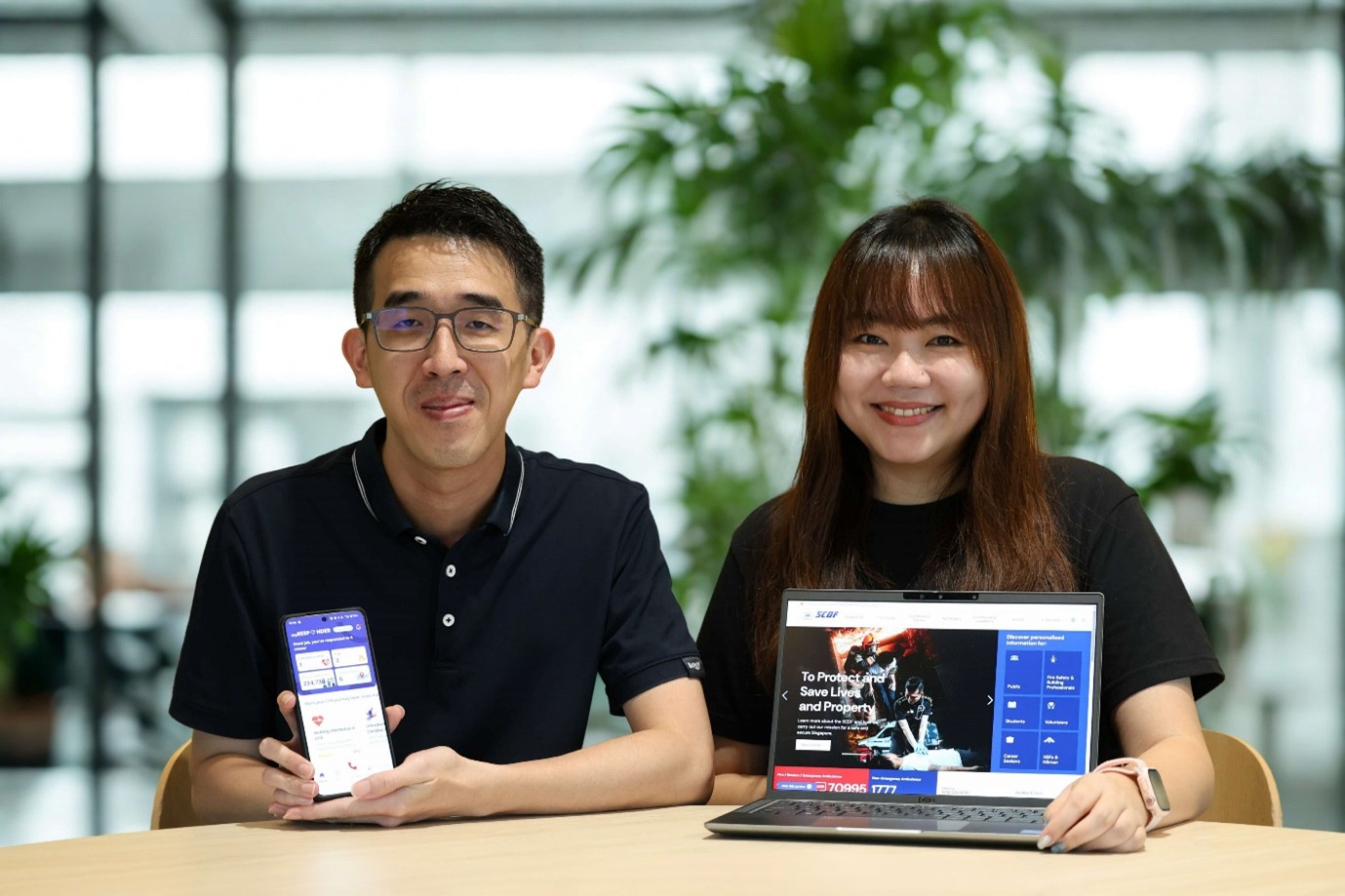 DSPMC IT Consultants Low Guoliang (left) and Hon Chee Hui (right) worked hard with their teams to deliver the enhanced myResponder app and SCDF website. (Photo: HTX/Janna Giam)
DSPMC IT Consultants Low Guoliang (left) and Hon Chee Hui (right) worked hard with their teams to deliver the enhanced myResponder app and SCDF website. (Photo: HTX/Janna Giam)
She added that for projects like these, a regular cadence has to be maintained with key stakeholders, to ensure that progress meets standards, whether it’s in the designing, prototyping, or testing phases.
For the SCDF website in particular, this collaborative approach enabled the team to deliver the project with remarkable efficiency.

![[FEATURED NEWS] Beating the traffic, prioritising lives](/Cwp/assets/htx/images/listing-card-placeholder.png)